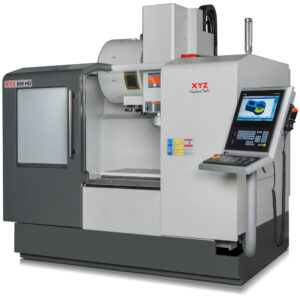Quad Nods vs. Traditional Nodes: A Comparative Analysis
As technology evolves, so does the architecture that powers our networks and data systems. In recent years, “Quad Nods” has emerged as a term that’s gaining traction among tech enthusiasts and professionals. But what exactly are Quad Nods, and how do they differ from traditional nodes? This comparative analysis will delve into the mechanics, benefits, and potential drawbacks of Quad Nods versus traditional nodes to help you understand their impact on modern technology.
Understanding the Basics: What Are Quad Nodes?
Before diving into the comparison, it’s essential to understand what nodes are. In networking and computing, a node is any device or data point within a larger network. This could be a computer, a server, or even a smaller device like a sensor. Nodes communicate with each other, sharing and processing data to ensure the smooth functioning of a network.
Traditional nodes follow a basic structure and perform simple tasks like data transmission and processing. They’ve been the backbone of network architectures for decades. However, as data needs grow and systems become more complex, traditional nodes face limitations, paving the way for more advanced solutions like Nods.
What Are Quad Nods?
Quad Nods represent a newer, more sophisticated approach to node architecture. Unlike traditional nodes, which operate independently, Quad Nods consist of a cluster of four interconnected nodes working together as a single unit. This design allows for enhanced data processing, fault tolerance, and scalability.
Nods are particularly effective in environments requiring high performance and reliability, such as data centers, advanced AI computations, and large-scale IoT networks.
Key Differences Between Quad Nods and Traditional Nodes
1. Structure and Configuration
- Traditional Nodes: Typically, a single device or server performs its assigned tasks within the network.
- Nods: A collective unit of four nodes operating in tandem, sharing resources and workloads for optimized performance.
2. Data Processing Capabilities
- Traditional Nodes: Limited to the processing power of the individual node, making them less efficient for large-scale tasks.
- Quad-nodal setup: Distributed processing across four nodes enhances speed and efficiency, making them ideal for handling big data and complex computations.
3. Fault Tolerance and Redundancy
- Traditional Nodes: If a traditional node fails, it can disrupt the entire network unless backups are in place.
- Quad-nodal setup: The failure of one node doesn’t impact the overall unit, as the remaining three nodes can compensate, ensuring uninterrupted service.
4. Scalability
- Traditional Nodes: Adding more nodes to a network can be complex and costly, as each node needs to be integrated and configured individually.
- Quad-nodal setup: Scalability is built-in, allowing for easier expansion of the network by simply adding more Quad Nod units.
Advantages of Quad Nods

1. Enhanced Performance
With four nodes working together, Quad Nods offer superior data processing capabilities, making them suitable for applications requiring high computational power.
2. Improved Reliability
The interconnected nature of Nods ensures that the system can withstand node failures without significant downtime or data loss.
3. Cost-Effective Scalability
Expanding a network with Quads is more straightforward and less resource-intensive than adding multiple traditional nodes.
4. Optimized Resource Utilization
Nods can balance workloads more effectively, preventing overloading of any single node and ensuring smoother operation.
Potential Drawbacks of Quad Nods
1. Complex Implementation
The setup and management of Quad-nodal setup can be more complex than traditional nodes, requiring advanced knowledge and specialized hardware.
2. Higher Initial Costs
While cost-effective in the long run, the initial investment in Quad-nodal setup can be higher due to the need for more sophisticated equipment and configuration.
3. Limited Support and Compatibility
Not all software and systems are optimized for Quad Nods, which may limit their applicability in certain environments.
Use Cases: Where Do Quad Nods Shine?
Quad Nods are particularly beneficial in environments that demand high performance and reliability. Some common use cases include:
- Data Centers: For managing large-scale data processing and storage.
- AI and Machine Learning: For handling complex computations and real-time data analysis.
- IoT Networks: For managing data from a large number of interconnected devices.
- Blockchain and Cryptocurrencies: For processing transactions quickly and securely.
Final Thoughts: Choosing the Right Node Architecture
When deciding between traditional nodes and Nods, the choice largely depends on your specific needs. For smaller networks with minimal processing requirements, traditional nodes may suffice. However, for larger, more complex environments where performance, reliability, and scalability are critical, Quad Nods offer a compelling solution.
As technology continues to evolve,Nods will likely become more prevalent, offering new possibilities for network and data management. Understanding the strengths and limitations of both traditional nodes and Quad Nod can help you make an informed decision about the best architecture for your needs.
Stay tuned as we explore more about emerging technologies and how they are shaping the future of networking and data systems!
Frequently Asked Questions
What are Quad Nods in technology?
Nods refer to a system architecture or network design where four nodes are interconnected to improve performance, redundancy, and scalability.
How do Quad Nods differ from traditional nodes?
Nods offer enhanced load balancing and fault tolerance compared to traditional single or dual-node systems, making them more efficient for high-demand environments.
What are the benefits of using Quad Nods?
Quad-nodal setup provide better performance, improved scalability, and increased reliability in network and computing systems, making them ideal for complex tasks.
Where are Quad Nods commonly used?
Nods are typically used in data centers, cloud computing, and distributed networks where high performance and fault tolerance are essential.
How do Quad Nods improve network reliability?
By using four interconnected nodes, Quad-nodal setup create multiple redundancy layers, ensuring network stability even if one node fails.
What is the cost difference between Quad Nods and traditional nodes?
While Quad-nodal setup may have higher upfront costs, their efficiency and reliability can lead to long-term savings by reducing downtime and maintenance needs.
Are Quad Nods suitable for small businesses?
Nods are more commonly used in large-scale operations, but small businesses with high-performance needs can also benefit from this setup.
Can Quad Nods be integrated with existing network infrastructures?
Yes, Nods can be integrated with existing systems, but it may require additional configuration depending on the network architecture.
What are the potential drawbacks of using Quad Nods?
The primary challenges include higher initial setup costs and potential complexity in managing multiple nodes compared to simpler systems.
How do Quad Nods enhance data processing in AI and machine learning applications?
Quad-nodal setup distributes data processing tasks more evenly, resulting in faster computations and better handling of large datasets in AI and machine learning models.











Post Comment